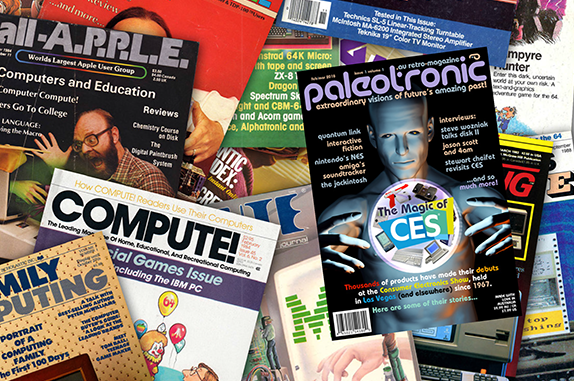
When I was a child, I always eagerly looked forward to going to the library – not just for the books (although I was a pretty big science-fiction reader) but for the periodicals. In particular, computer magazines. My family was not well off (but rich in love!) and while my parents worked hard to provide me with a computer, software was a luxury we by and large couldn’t afford.
But, at the library, there was a free solution (that didn’t involve software piracy!) – those computing magazines commonly published “listings”, the source code of applications (termed “programs”) that you could type in. It was time consuming, and the typeset listings frequently had errors in them, but that was all part of the “fun” – in order to make the program work, you had to under- stand the code enough to recognise the bugs and fix them. And so, for want of being able to play a new game, I learned computer programming, eventually.

There was other value to be found in these magazines, too – I learned about hot new technologies (like 16-bit processors!), the idiosyncrasies of other computing platforms, news in the industry, games that I wanted (but couldn’t afford, and anxiously awaited type-in clones)…they were never boring (well, maybe the stodgy PC ones). I loved those magazines – Compute, Antic and The Rainbow, among others – and they were a big influence on ours.
In fact, you will notice quite quickly that this magazine makes extensive use of excerpts, quotes, clips, graphics and advertisements previously published in those now-defunct computer, video game (is it video game, videogame or video-game? we’ll discuss this later…) and other electronics-related magazines. We do this in order to present engaging, well-rounded content that provides a clear glimpse into the past – we think that’s crucial to fostering a contextually-accurate view of electronic history.
Further, we want every page of Paleotronic Magazine to delight, and a curated selection of diverse historical artifacts helps us do that. We desire to be, in part, a museum in print, and when you visit, we want you to leave happy.
Some of you will question our right to do this arbitrarily. We will plead fair use – we only use this material to augment new spreads, support articles, create montages and so on and do not republish segments or entire original articles in isolation unless they have a clear educational purpose (such as an annotated BASIC listing or plans for an electronics project.) Even then, we will annotate them ourselves and/or provide context, or some reason why it matters we’ve placed the material then-and-there, and not just blithely copy without distinction in an effort to fill pages.
However, in all cases we will credit the source and the date of publication. We also use freely-available product photos, promotional materials and previously published pictures of individuals in our effort to create new educationally-oriented works. Paleotronic Magazine provides nostalgia and entertainment value for many, to be sure, but ultimately we see ourselves as an educational publication and our point and purpose is to inform, enlighten and encourage skills development, particularly in the fields of electronics engineering, computer programming and design.
In that spirit, we endeavour to provide useful context, trivia, facts and knowledge in each article, to provide learning opportunities for our readers, young and old.
Regarding our own copyright: while we feel printed copies of Paleotronic are important, and will continue to charge for digital copies in order to help offset the costs of early print runs, we also recognise that it would be hypocritical of us to attempt to maintain a traditional copyright long-term over something that is largely derivative.
So, we pledge to publish content to our website for public access two months after it is printed, and declare that our copyright on any of our material will expire five years after the date of first publication. We feel that this is fair and provides a balance that we hope the owners of any content we re-purpose will find acceptable.
We deeply thank the original creators, authors and illustrators and hope that we can do justice to their efforts by giving their works another life in our pages. We are also proud to become “yet another magazine” on a deep and storied pile of previous magazines, and hope that we can be a vehicle to get eyeballs in front of all of them once again.
Our intent is not to make a substantive profit off the backs of others, only to ensure that electronics and computing history is not forgotten, and we beg forgiveness if anyone feels slighted by our attempts – please contact us at editor@paleotronic.com and we won’t use any of your works in the future. But we hope it never comes to that, and are grateful for your understanding.
Thank you for reading, and we hope you enjoy (or have enjoyed, depending on how you got to this point) the rest of this issue! If you would like to browse an extensive collection of vintage magazines, please check out The Magazine Rack on the Internet Archive at:
https://archive.org/details/magazine_rack
Help them live on, and give them (and us) a home – in your brain!

Be the first to comment